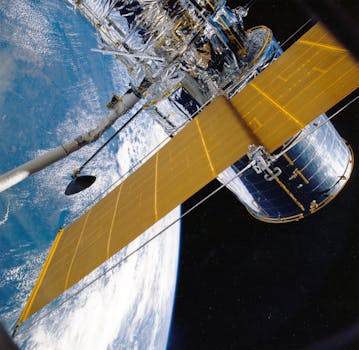
Beyond Earth: How Recent Advances in Satellite Tech are Shaping Global Communications
Satellite Technology is shaping Global Communications, and recent advances in this field are transforming the way we communicate across the globe. With the increasing demand for faster and more reliable connections, satellite technology has become a crucial component of modern telecommunications. In this article, we will explore the recent advances in satellite technology and their impact on global communications.
Introduction to Satellite Technology
Satellite technology has been around for several decades, but recent advances have made it more accessible and affordable. Satellites are artificial objects that orbit the Earth, transmitting and receiving signals to and from different locations on the planet. They play a critical role in providing communication services, including voice, data, and video transmissions. With the launch of new satellite constellations, such as OneWeb and Starlink, the possibilities for global communications have expanded exponentially.
Advances in Satellite Technology
Recent advances in satellite technology have led to the development of more efficient and powerful satellites. One of the significant advancements is the use of High-Throughput Satellites (HTS), which offer higher bandwidth and faster data transfer rates. HTS satellites use multiple spot beams to provide coverage, allowing for more efficient use of bandwidth and increased capacity. Another advancement is the development of Low Earth Orbit (LEO) satellites, which operate at lower altitudes and provide lower latency and faster speeds.
The use of advanced materials and technologies, such as 3D printing and nanotechnology, has also improved the design and manufacturing of satellites. These advancements have enabled the production of smaller, lighter, and more fuel-efficient satellites, which are easier to launch and maintain. Additionally, the development of electric propulsion systems has increased the maneuverability and lifetime of satellites, reducing the need for traditional chemical propulsion systems.
Impact on Global Communications
The recent advances in satellite technology have had a significant impact on global communications. With the increased capacity and efficiency of modern satellites, more people around the world can access fast and reliable internet connections. This has opened up new opportunities for remote communities, enabling them to connect with the rest of the world and access essential services, such as education, healthcare, and financial services.
Satellite technology has also improved the resilience and reliability of global communications networks. By providing redundant connections and backup systems, satellites can ensure that critical communications services remain operational, even in the event of natural disasters or network outages. Furthermore, the use of satellite technology has enabled the creation of new services, such as satellite-based IoT (Internet of Things) networks, which can connect devices and sensors in remote or hard-to-reach areas.
Conclusion
In conclusion, recent advances in satellite technology are transforming the way we communicate across the globe. With the development of more efficient and powerful satellites, the possibilities for global communications have expanded exponentially. As the demand for faster and more reliable connections continues to grow, satellite technology will play an increasingly important role in providing communication services to people around the world.


